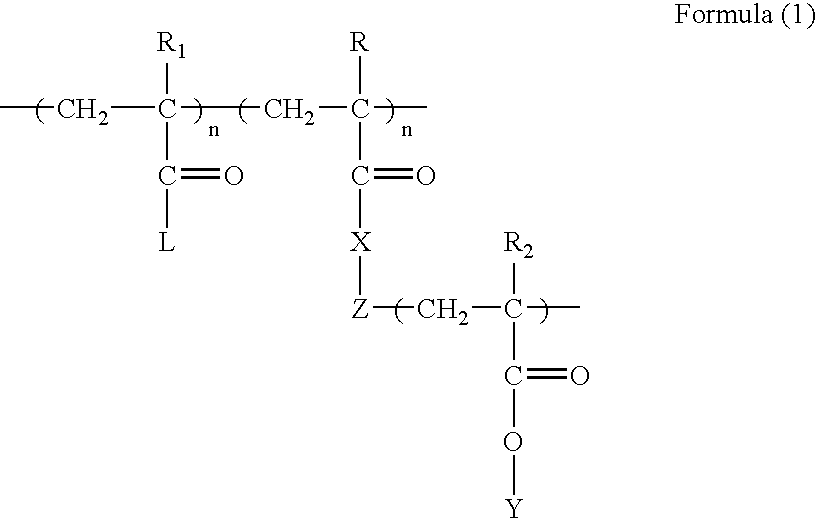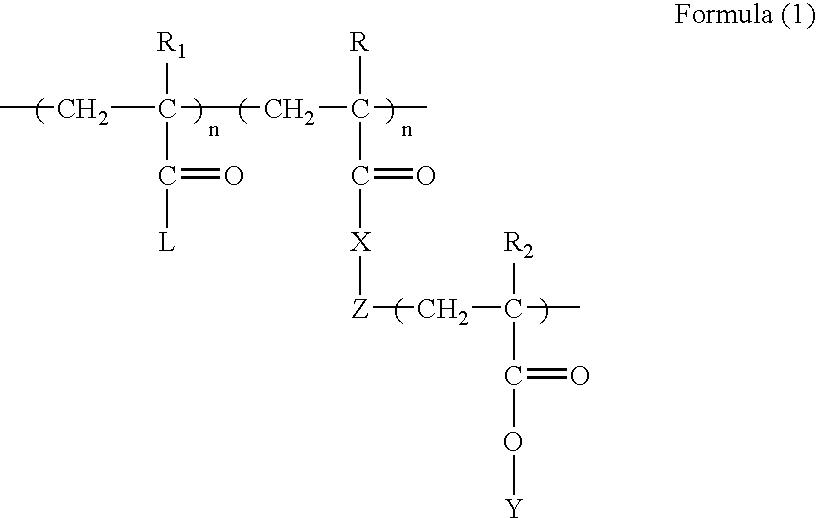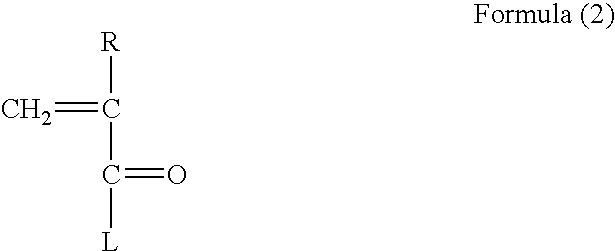Polyvalent imprinted polymer and process of preparation thereof
a technology of imprinted polymers and imprinted polymers, which is applied in the field of imprinted polymers, can solve the problems of loss of specificity, difficult preparation of imprinted polymers in aqueous systems, and natural ligands derived from glucose being susceptible to microbial growth, and achieves the effect of improving interactions
- Summary
- Abstract
- Description
- Claims
- Application Information
AI Technical Summary
Benefits of technology
Problems solved by technology
Method used
Image
Examples
example 1
[0091]This example describes the process for the preparation of lysozyme imprinted polyvalent copolymers containing poly (acryloyl N-Acetyl Glucosamine)-6-(-N-acryloyl amino) caproate (Macromer). 50 mg of poly (acryloyl N-Acetyl Glucosamine)-6-(-N-acryloyl amino caproate) (Macromer) was dissolved in a two neck round bottom flask and 10 ml double distilled water was added. To the resulting solution 10 mg of lysozyme was added and solution was incubated for 15 min at room temperature to form lysozyme-Acryloyl 6-Amino Caproic Acid poly Acryloyl N-Acetyl Glucosamine complex. The comonomer 200 mg N-isopropylacrylamide (NIP A) and initiator ammonium persulfate 10 mg were added to above aqueous solution containing lysozyme-poly (acryloyl N-Acetyl Glucosamine)-6-(-N-acryloyl amino) caproate complex. The solution was purged with nitrogen gas for 15 min and 40 μl. tetramethylene ethylenediamine was added. The reaction was carried out at 37° C. for 4 hrs. The imprinted polyvalent copolymer was...
example 2
[0093]This example describes the process for the preparation of polyvalent imprinted polymers by inhibiting lysozyme completely using requisite moles of poly (acryloyl N-Acetyl Glucosamine)-6-(-N-acryloyl amino) caproate (Macromer) and by addition of varying amount of NIP A so as to vary polymer composition (Table 2). 50 mg of poly (acryloyl N-Acetyl Glucosamine)-6-(-N-acryloyl amino) caproate was dissolved in a two neck round bottom flask and 10 ml double distilled water was added. To the resulting solution 10 mg of lysozyme was added and solution was incubated for 15 min at room temperature to form lysozyme-poly (acryloyl N-Acetyl Glucosamine)-6-(-N-acryloyl amino) caproate complex. The comonomer 200 mg N-isopropylacrylamide (NIPA) and initiator ammonium persulfate 10 mg were added to above aqueous solution containing lysozyme-poly (acryloyl N-Acetyl Glucosamine)-6-(-N-acryloyl amino) caproate (Macromer) complex. The solution was purged with nitrogen gas for 15 min and 40 micro ml...
example 3
[0094]This example describes the process for the preparation of polyvalent copolymers containing poly Jacryloyl N-Acetyl Glucosamine)-6-(-N-acryloyl amino) caproate (Macromer) in the absence of the print biomolecule. 50 mg of poly (acryloyl N-Acetyl Glucosamine)-6-(-N-acfyloyl amino) caproate (Macromer) was dissolved in a two neck round bottom flask and 10 ml double distilled water added. The comonomer 200 mg isopropylacrylamide and initiator ammonium persulfate 10 mg was added to above aqueous solution containing poly (acryloyl N-Acetyl Glucosamine)-6-(-N-acryloyl amino) caproate. The solution was purged with nitrogen gas for 15 min and 40 fl1. tetramethylene ethylenediamine was added. The reaction was carried out at 37° C. for 4 hrs. Polyvalent copolymer was precipitated in diethyl ether and vacuum dried
PUM
| Property | Measurement | Unit |
|---|---|---|
| w/w | aaaaa | aaaaa |
| temperature | aaaaa | aaaaa |
| temperature | aaaaa | aaaaa |
Abstract
Description
Claims
Application Information
 Login to View More
Login to View More - R&D
- Intellectual Property
- Life Sciences
- Materials
- Tech Scout
- Unparalleled Data Quality
- Higher Quality Content
- 60% Fewer Hallucinations
Browse by: Latest US Patents, China's latest patents, Technical Efficacy Thesaurus, Application Domain, Technology Topic, Popular Technical Reports.
© 2025 PatSnap. All rights reserved.Legal|Privacy policy|Modern Slavery Act Transparency Statement|Sitemap|About US| Contact US: help@patsnap.com



